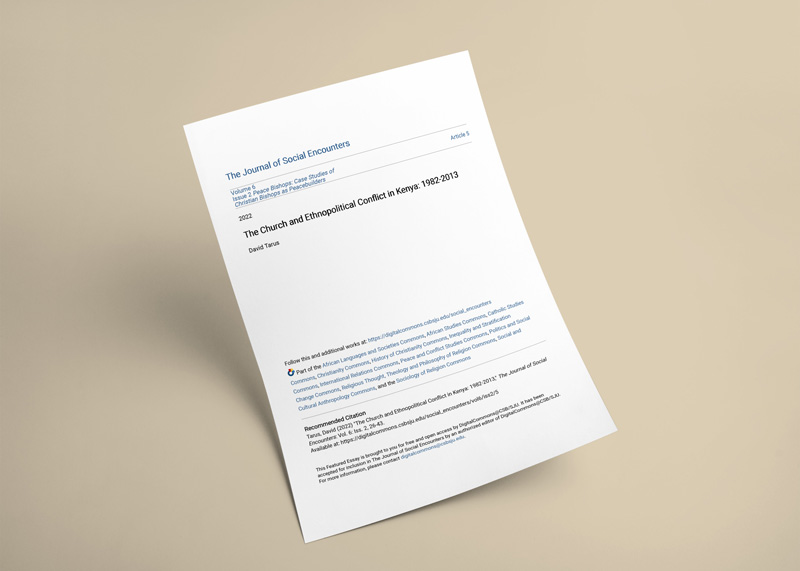The chapter examines the role of the church in addressing the problem of ethnopolitical conflict in Kenya from 1982 to 2013. Though ethnocentrism within the Kenyan Christian community goes beyond the years cited to the colonial period and the immediate years following independence, the intensity of the problem after 1982 calls for special attention. The single event that marks political change in Kenya is the 1982 attempted coup.
Although this was not successful, the coup heightened opposition against Moi’s rule and thus, 1982 marks the beginning of the recent history of Kenya, a history in which three phases may be identified in the relationship between church and state: a united church (1982–2002); a divided church (2002–2007); and a recovering church (2008 onwards).
The thesis of the chapter is that the church in Kenya generally exhibited a robust socio-political engagement in the 1980s and 1990s but lost its prophetic voice from 2002 to 2008 mainly because of ethnocentrism and the co-option and compromise of the clergy by the government and the opposition.
The chapter, which is based on archival and library materials, broadly examines the roles the mainstream Protestant, evangelical, and Roman Catholic churches and their umbrella organizations, the National Council of Churches of Kenya (NCCK), the Evangelical Fellowship of Kenya (EFK)—now called the Evangelical Alliance of Kenya, (EAK), and the Kenya Catholic Episcopal Conference (KCEC)—now called Kenya Conference of Catholic Bishops (KCCB), played in their quest for social cohesion. In doing so, the chapter highlights the failures of Kenyan churches in addressing the problem of ethnopolitical conflict.
